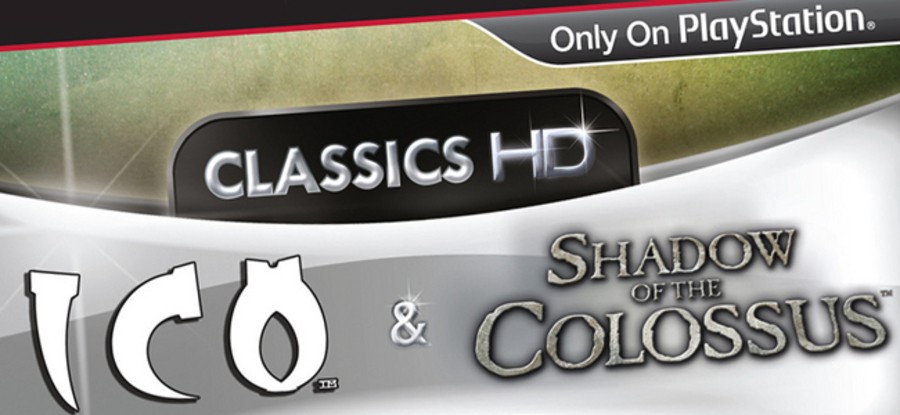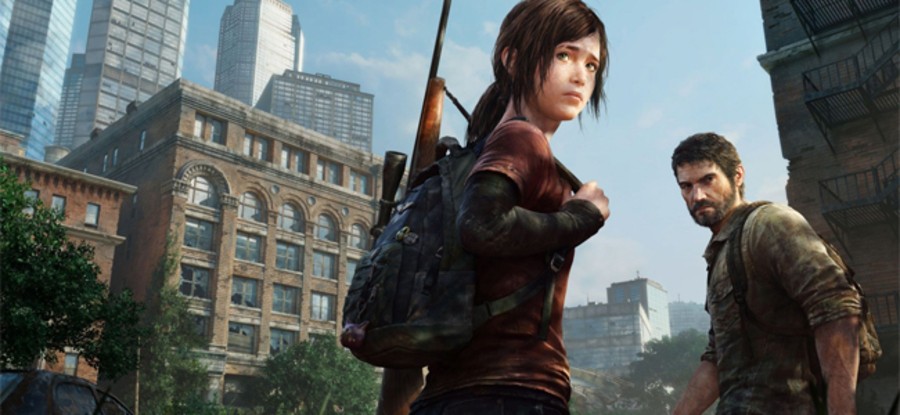
The humble high-definition remaster proved a popular revenue stream for publishers on the PlayStation 3. Starting with the excellent God of War Collection, and spawning several retail compilations thereafter – including Tomb Raider, Metal Gear Solid, and more – the concept of refreshing previous generation favourites made plenty of sense for all of the parties involved. Not only did it augment property holders with another opportunity to recoup the costs from their initial investment, but it also presented consumers with a chance to play critically acclaimed games that they may have otherwise missed. But with the well of worthwhile re-releases almost exhausted, what’s next for the humble revamp on the PlayStation 4?
For current generation consoles, the Classics HD line owed much of its success to a couple of key factors. Outside of the expensive launch model, the PS3 was not backward compatible, meaning that you had to keep your PlayStation 2 hooked up if you wanted to revisit titles such as Shadow of the Colossus and Sly Cooper. Furthermore, the introduction of Sony’s black behemoth in 2006 brought with it a visual revolution, as clunky cathode ray television sets were replaced by slick, high-resolution panels. Suddenly, playing games through your old component cables didn’t seem feasible, even if you’d made the effort to incorporate your creaky PS2 into your spangly new home theatre.
Subscribe to Push Square on YouTube166k

As such, exploiting the advantages of the upgrade made a lot of sense. Converting the titles didn’t require wholesale changes to the original code, so the practice was cheap for publishers. And the updates could be sold on the basis of their revamped visuals, ease of accessibility, and other minor enhancements, such as the inclusion of Trophies and behind-the-scenes content. However, while the initiative has been successful over the past five or so years, it’s harder to see a future for the re-release business moving forwards.
With a vast majority of the most-wanted titles from the PS2 era already available on Sony’s flagship format – the upcoming Final Fantasy X/X-2 HD Remaster and Kingdom Hearts HD 1.5 ReMIX are likely to represent the last of their kind – it’s tough to imagine many more releases from the aging system making the jump to new machines. And the circumstances between the upcoming hardware transition and the previous one are not quite the same. While the next generation system isn’t backward compatible like its predecessor, the uptake of 4K and 3D televisions has been slow, meaning that there’s unlikely to be a major format change over the coming years. Furthermore, features such as Trophies are already available as a standard in most current generation games.

But does that mean that we’re going to see the revenue stream slump to an abrupt end? Maybe, but it’s still possible that publishers will get some mileage out of the re-release model towards the start of the PS4’s lifespan. Titles such as Grand Theft Auto V have only been confirmed for current generation consoles, but there’s every chance that Rockstar Games will be planning to deploy an updated re-release on Sony’s new piece of hardware next year. And it’s improved performance, rather than straightforward visual fidelity, that the initiative’s likely to serve the best.
For example, The Last of Us pushed every inch of the PS3’s power. As a consequence, it’s not hard to imagine Naughty Dog smoothing out the frame-rate and tidying up the textures for the PS4 – especially now that the company’s confirmed that it’s sticking with the same engine for its next generation games. Beyond: Two Souls is likely to follow in the post-apocalyptic adventure’s footsteps, and Polyphony Digital has already revealed that it’s working on an enhanced version of Gran Turismo 6. Popular third-party releases like BioShock: Infinite, Tomb Raider, and Splinter Cell: Blacklist could all plot the same course, too.

However, it’s unclear whether such inconsequential improvements would even appeal to the average consumer. Smoother performance is always appreciated, but it’s difficult to market. At least with the re-release of PS2 games, companies could provide side-by-side comparisons that showed a marked progression in resolution, texture quality, and more. Such refinements are going to be much more challenging to communicate as we transition into a new generation with the PS4. And that may prompt publishers to explore other opportunities to encourage us to re-purchase their best games.
Whether that will involve additional content or other incentives remains to be seen. One thing’s for sure, though, firms are going to have to seriously increase their efforts if they want to effectively re-sell PS3 titles on next generation hardware. The days of simply repurposing previously released content with a fresh lick of paint may be fading. And it’s going to be interesting to see whether that deters publishers from exploring the model on the PS4 at all, or forces them to come up with more creative solutions. Where are you putting your money?
Do you think that re-releases have a future on the PS4? What improvements would encourage you to re-purchase a PS3 title on Sony’s next generation system? Let us know in the comments section and poll below.
Which of the following would convince you to re-buy a PS3 game on PS4? (35 votes)
- Performance improvements would be great
- I’d definitely be tempted by additional content
- Accessibility is the only reason that I’d consider upgrading
- Honestly, none of the above
Please login to vote in this poll.





Comments 18
I wouldn't mind seeing companies stop with the constant HD re-releases.
@Gamer83 Y'know, I kinda felt the same. And then I thought: man, if they even try this with PS3 games on PS4 it's never going to fly. Then I realied that I will probably re-buy The Last of Us, GTA5, etc on PS4 anyway. I'm clearly part of the problem!
I, for one, am glad of all the HD Collections this Gen. I never owned a PS2, so I got to play many of the classic games for the first time this Gen (God of War, MGS 2+3 and soon FFX, X-2, and Kingdom Hearts). I know for the people who played these during the PS2 era, it may seem like the developers are cash grabbing, but for people that didn't own a PS2, this was the best thing ever.
HD re-re-releases.
Joking aside, I would totally buy some PS3 games again on PS4 if the price was reasonable and performance was improved. For example, if we got titles like Fallout 3 and Skyrim (which both ran terribly for me on PS3) re-released and they ran at 60fps with minimal problems, then I'd be tempted.
@heero2001 And that really does show the other side to this. Xbox 360 owners who are considering switching to the PS4, for example, may jump at the chance to play something like The Last of Us, so maybe there doesn't need to be a whole list of improvements to make the port worthwhile. I can certainly see how, having not owned a PS2, you would have got a ton of mileage out of all of the re-releases on PS3.
@get2sammyb
It depends when the games get announced. I plan to keep my PS3 and since I've bought The Last of Us unless there were to be a slew of extra content (I'm thinking $50 extra dollars of PS4 exclusive content for free) then I wouldn't re-buy it since the PS3 version is fine as is. I have GTA V, Batman: Arkham Origins and Beyond Two Souls as the remaining PS3 games on pre-order, however if a PS4 version were announced before release of one of those games (which I doubt) I'd switch the pre-order over without question. I won't re-buy the games though unless given a very good reason to. It's different with Vita games, I bought Mortal Kombat for that system eventhough I had it on PS3 because I wanted to play the game on the go. Same reason I'd re-buy Injustice should it get ported. But a late PS4 port of a PS3 game? I can't really think of what could be done to make me double dip besides $50+ of in-game content exclusive to PS4 and I just don't think companies would be willing to do that.
I think to an extent, Gaikai is gonna make this more obsolete.
Is anybody even considering playing enhanced PS3 games on Vita? Or do I misunderstand my life. Cause if I can indeed play Fallout and TES on Vita, then I won't ever stop. I mean, Gaikai is for streaming games to Vita, right...?
Idk how they'd handle resolution, but they definitely need to release PS4 versions of PS3 games if no b.c., which should be remote play compatible according to themselves
Beginning of the generation....."nobody wants backwards compatibility"
Second year of the generation....."Let's re-release our old games with some spit shine on them to make a quick buck."
And the consumers continue to follow this trend like sheep.
The only HD remaster collection Ive bought was Ico&SOC. The performance improvements and the great 3D was just 2 of the reasons I picked them up. Difficult games to find these days too for the ps2 versions in decent condition. Im looking forward to the FFX n X-2 remasters too. To be honest not many of the others interested me seen as id played them a lot on Ps2 anyway but i dont see them as a bad thing. If you dont like them, dont buy them. Simple. I find it amusing when people spit thier dummys out over the HD remasters..
Well considering they didn't really do all that much upgrading the PS3 to the PS4, whatever they did do will be the selling point -
as Charlesnarls said - playing on the Vita
Share videos of your gameplay
start playing as you download
Just the fact that the PS4 doesn't play PS3 games means they'll be able to resell games. Not all, but the worthy ones - inFamous 1 and 2 package, R&C:Future 3 retail games plus 2 DLs, Batman City and Asylum, all 3 Uncharteds, every single GoW game ever made (and somehow even those that weren't). I'm sure there are others but I don't play FPS. I guess the Killzone and Resistance games. Basically any game series that's already been bundled they can re-bundle - to paraphrase ShogunRok.
I would buy a PS4 edition of TLoU in an instant, which is how fast I plan on buying Final Fantasy X (my favorite FF). LittleBigPlanet, R&C, Crash Bandicoot and Spyro (a guy can dream) would be possible candidates for a PS4 remastering.
I don't see why Sony isn't doing the same thing on the Vita. There are a ton of PSP games that people would kill to play on the Vita; Resistance: Retribution, God Eater Burst & Dissidia 012: Duodecim Final Fantasy & Dissidia Final Fantasy just to name a few - all those games were hampered by the PSP's single analogue stick.
@rjejr I'm still hoping Sony decides to port inFAMOUS to the Vita, people would be all over that.
The only one I would pick up is if they re-did the original most wanted as a HD Remake for the PS4.....and im not just talking about upping the texture count but like what kingdom hearts is going to be....a near remake.
For anyone that doesn't know the original kingdom hearts code was actually lost they had to take a retail game to get some info they needed but most of it has been re-coded as well......reason why i think if i remember KH2 combat system is actually going to be in it.
Thats what i call a real HD remake
I have no issue with the idea of HD releases, but they don't appeal to me. The issue is that it is not just graphics that improves with time and new hardware. Storytelling, physics, AI, game-play, level design etc etc etc all improve as games advance, and unless they are going to do a significant re-write they will stay the same. The couple of times I have tried a HD remake, I have been very underwhelmed.
So, although there can be value in a HD remake, my gaming time/budget is limited and there are already more than enough new games coming out to fill both.
It really all depends on how Sony utilizes there Gaikai technology. They have the potential to make there own console version of Steam with over 3 generations of past Playstation games and future PS4 digital downloads. In my opinion that could be huge and could potentially be the driving force for digital. There's still a lot we don't know about the PS4. If devs do still make HD remakes it will more than likely be digital in my opinion.
I don't think PS3 games should be re-released. That being said, don't most games if this current generation only run in 720p? Unless they're up scaled up, interlaced, ect.? I don't think it should happen, but what if current games were bumped up to 1080p with better textures, lighting, and higher polygon counts?
I think re-releases can be awesome. I never got a chance to play Shadow of the Colossus on PS2 and I never finished Ico back then, so now being able to play them on PS3 is awesome.
Since the PS3 I play on isn't mine and I might have to give it back someday, I'm somewhat reluctant to buy The Last of Us or any of the late-gen awesome PS3-games...meaning: a re-release of some of those games on PS4 would be awesome for me.
Besides: for some reason I have no interest whatsoever to play GTA V on current gen...but might be tempted by an updated, better looking next-gen version.
@get2sammyb I am one of those 360 owners jumping ship. So: the more kewl PS3 games on PS4, the better!
They need to put Vesperia on PS4
Show Comments
Leave A Comment
Hold on there, you need to login to post a comment...